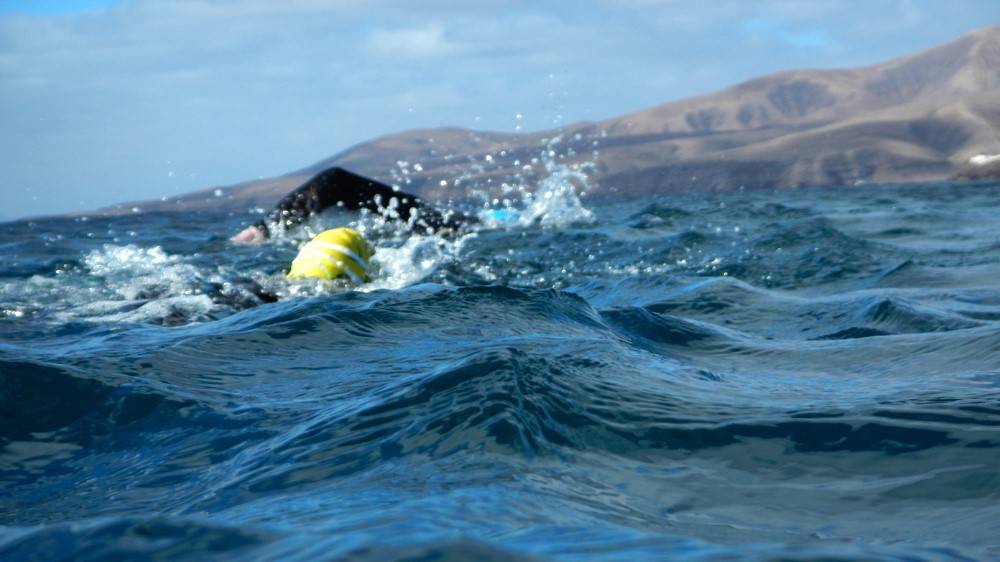Kein anderer Ausdauersport trainiert so umfangreich die Muskulatur, den Stoffwechsel und das Herz-Kreislauf-System wie ein Triathlon. Das Risiko einer akuten Verletzung (15 bis 56 Prozent) ist im Vergleich zu anderen Sportarten eher gering. Ein Großteil der Triathleten (41 bis 91 Prozent) erleidet allerdings während der Saison eine Verletzung aufgrund einer Überlastung.
Die meisten Verletzungen sind nicht gravierend, da weniger als die Hälfte der Triathleten verletzungsbedingt ihre Saisonvorbereitung unterbrechen müssen. Dennoch sind diese Verletzungen stets ärgerlich. Wir zeigen euch, welche Verletzungen am häufigsten auftreten und wie ihr sie vermeiden könnt.
Verletzungen beim Schwimmen
Beim Schwimmen kommt es manchmal zu Insertionstendopathien (entzündliche Störungen/Erkrankungen im Bereich eines Sehnenansatzes) im Schulter-Nacken-Bereich sowie zur Funktionsbeeinträchtigung des Schultergelenks mit Schleimbeutelentzündungen außerhalb und oberhalb des Schulterhauptgelenkes bei muskulärer Dysbalance und Schulterinstabilität.
Verletzungen im Rennen können durch Schürfungen am Neoprenanzug, Lidverletzungen (zum Beispiel durch einen Tritt oder Schlag auf die Schwimmbrille) sowie durch Hautverbrennungen entstehen.
Vorbeugende Maßnahmen beim Schwimmen
– Vaseline zur Vermeidung von Schürfungen
– Unterlassen schulterschädigender Aufwärmübungen
– vorsichtiger Gebrauch von Paddles
– muskuläre Balancierung an Schulter/Nacken/Rücken
– Training der Innenrotatoren des Schultergelenks und der schulteraufrichtende Muskulatur
Verletzungen beim Radfahren
Durch Radfahren können durch Sturz neben Schürfungen und Prellungen auch viel gravierendere Verletzungen hervorgerufen werden. Am häufigsten kommt es zum Schlüsselbeinbruch und zur Schultereckgelenkssprengung, außerdem zu Schädel-Hirn-Verletzungen und Brüchen der Wirbelkörper.
Überlastungsbedingte Probleme entstehen durch Insertionstendopathien (entzündliche Störungen/Erkrankungen im Bereich eines Sehnenansatzes) um das Kniegelenk, den Fuß und die Wirbelsäule sowie durch Muskelschmerzen im Schulter-Nackenbereich.
Vorbeugende Maßnahmen beim Radfahren
– Tragen eines Helms (logisch)
– Optimieren der Sitzposition
– balancierendes Wirbelsäulentraining Techniktraining mit Radspezialisten
Verletzungen beim Laufen
Laufen ist mit 58 bis 70 Prozent aller Verletzungen innerhalb des Triathlons die verletzungsträchtigste Sportart, gefolgt von Radfahren und Schwimmen. Dabei sind die Beine am häufigsten betroffen:
– Knie: 25 bis 42 Prozent
– Achillessehne: 10 bis 27 Prozent
– oberes Sprunggelenk 7 bis 22 Prozent
– Fußsohlenfaszie: 6 Prozent
Beim Laufen kommt es zu Kapsel-, Band- und Muskelverletzungen. Häufiger sind belastungsbedingte Achillessehnenbeschwerden, die Entzündung der Fußsohlenfaszie, Muskel-Sehnen-Ansatz-Reizungen (Insertionstendinosen) sowie Ermüdungsbrüche (Stressfrakturen) von Mittelfußknochen, Schien-, Waden- und Fersenbein sowie Oberschenkelknochen und Becken.
Vorbeugende Maßnahmen beim Laufen
– Verbesserung der muskulären Kompensation und Dehnfähigkeit
– Beinlängenausgleich mit Einlagen
– langsame Umfangs- und Intensitätssteigerung
– Trainingslager in wärmeren Gegenden
Verletzungen im Wettkampf
Die meisten Verletzungen (75 bis 91 Prozent) werden beim Vorbereitungstraining erlitten. Hingegen berichten nur 8 bis 27 Prozent der Triathleten über Verletzungen während des Wettkampfs. Trotzdem ist das Risiko im Wettkampf gegenüber dem Training etwa um das Sechsfache erhöht.
Auch im Hinblick auf innere Krankheiten sollten Triathleten einige Punkte beachten: Gerade bei heißen Rennen kann es zu Schweißbildungsraten von sechs bis zehn Litern in drei Stunden kommen. Während der Belastung muss daher regelmäßig eine Flüssigkeit getrunken werden, der zuvor ein Gramm Salz pro Liter hinzugefügt wurde. Wird der Flüssigkeitsverlust nicht ersetzt, kann der Sportler in einen lebensbedrohlichen Zustand geraten.
Verhaltensregeln bei starker Hitze
– ausreichende Akklimatisation
– ausreichende Flüssigkeitsaufnahme vor, während und nach dem Wettkampf
– Beachtung kritischer Überhitzungszeichen (pulsierender Kopfdruck, Schwindelgefühle, extreme Muskelschwäche, abstehende Körperhaare)
– Reduktion der Wettkampfgeschwindigkeit
– Verzicht auf Medikamente
– Teilnahme nur bei ausreichend gutem Trainingszustand
– ständige Kühlung von Kopf-, Nackenbereich und Beinen mit Wasse




















